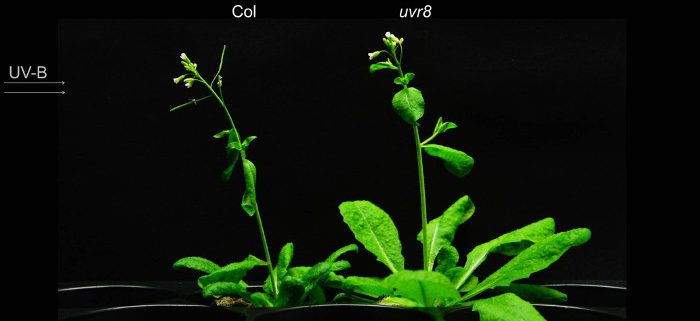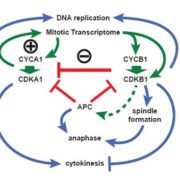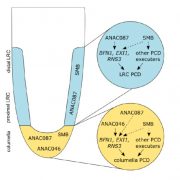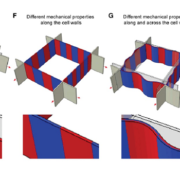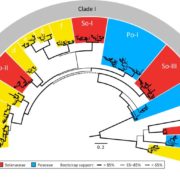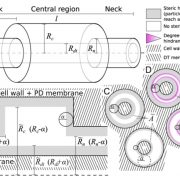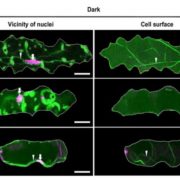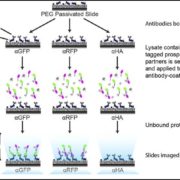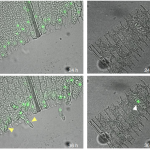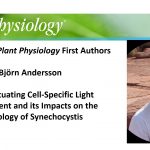UV-B attracts inflorescence stems
Vanhaelewyn et al. examine phototropism in adult plants. Plant Cell https://doi.org/10.1105/tpc.18.00929
By Lucas Vanhaelewyn1, András Viczián2, Filip Vandenbussche1
- Laboratory of Functional Plant Biology, Department of Biology, Faculty of Sciences, Ghent University, KL Ledeganckstraat 35, B-9000 Gent, Belgium;
- Institute of Plant Biology, Biological Research Centre, Temesvári krt. 62, H-6726 Szeged, Hungary.
Background: Many plants can bend and turn towards light; this process is called phototropism. Ultraviolet-B (UV-B) radiation is a natural part of sunlight and, similarly to blue light, it has the capacity to cause bending of young Arabidopsis seedlings towards the UV-B source. Earlier studies showed that this mechanism is controlled by specialized, light-absorbing proteins, the so-called photoreceptors. In this case, seedling bending towards UV-B is governed by phototropin photoreceptors, which can also detect blue light, together with the UV-B-specific UVR8 photoreceptor. These photoreceptors control processes that lead to differential accumulation of the plant hormone auxin between the irradiated and shaded sides on the plant, resulting in longer cells at the shaded side. This causes bending toward the light.
Question: Although considerable knowledge was available on young seedlings, we did not know much about the phototropism of inflorescence stems in the adult plants. We tested how stems perceive and respond to UV-B by studying Arabidopsis plants that lack UVR8 (uvr8 mutant) using molecular biology and microscopy techniques.
Findings: We found that the UV-B induced bending of the stem in the adult plant is mediated by the UVR8 photoreceptor, surprisingly, without significant contribution from phototropins. We have established that UVR8 is more active at the illuminated side of the stem compared to the shaded side. This leads to differential signaling between both stem sides resulting in the accumulation of different levels of key signaling proteins and hormones that locally trigger elongation to a different level and thus bending. We also observed that the different layers of the stem contribute to the bending differently, with the outer layers being dominant. We showed that besides auxin, other plant hormones are also required for stem orientation. Taken together our work revealed the molecular basis of a mechanism that causes flowers to orientate towards a UV-B source.
Next steps: We would like to further elaborate on the missing steps of the mechanism that we report in this paper. It is also worth examining the biological role of UV-B-induced reorientation of inflorescence stems by performing outdoor experiments.
Lucas Vanhaelewyn, András Viczián, Els Prinsen, Péter Bernula, Alejandro Miguel Serrano, Maria Veronica Arana, Carlos L. Ballaré, Ferenc Nagy, Dominique Van Der Straeten, Filip Vandenbussche. (2019). Differential UVR8 signal across the stem controls UV-B-induced inflorescence phototropism.
Plant Cell; DOI: https://doi.org/10.1105/tpc.18.00929
Key words: cell division, photomorphogenesis, phototropism, UV-B radiation


